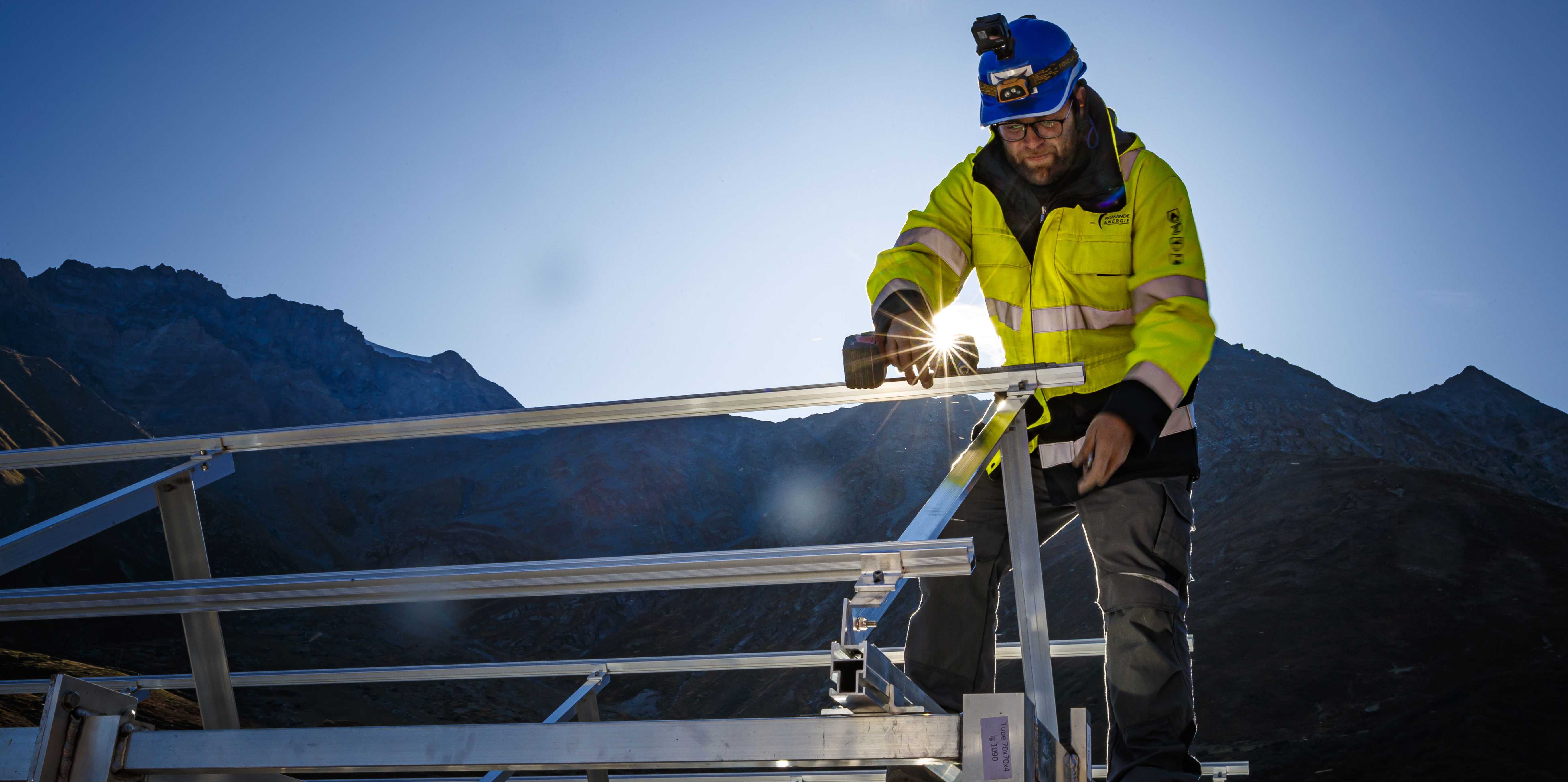Approved by the Swiss parliament on 29 September 2023, the external pageMantelerlasscall_made is a set of measures aimed at accelerating the development of renewable energies. It sets a target of 35 TWh/year from new green technologies (solar, wind, wood and biogas) by 2035, compared with the level of around 6 TWh/year in 2022. This target would represent around half of Switzerland’s electricity demand that could be expected in 2035. The other half would be met by hydroelectric power and imports. And all without relying on nuclear power or large fossil fuel power stations.
In this context, the external pageEDGE consortiumcall_made of the SWEET programme of the Swiss Federal Office of Energy (SFOE), which brings together scientists from UNIGE, UNIBE, EPFL, ETH Zurich and other partners, has worked on four targets for electricity production between now and 2035: 17 TWh/year, 25 TWh/year and 35 TWh/year using a mix of new renewable energies, and 25 TWh/year using solar energy alone. Each target has been assessed by three modelling teams to define three strategies for attaining it at minimum cost. The technical, regional, economic and social implications of each strategy were carefully analysed.
Focus on diversity
The first strategy combines new technologies as far as possible, guaranteeing diversity and security of supply. To achieve the most ambitious target (35 TWh/year), this strategy implies a mix of 25 TWh/year of photovoltaic solar, 8 TWh/year of biomass and waste, and 2 TWh/year of wind power. Here, even with the lowest target (17 TWh/year, which would imply 15 TWh/year less solar), photovoltaic remains the dominant energy source.
‘‘This strategy involves discreet solar installations on facades and on rooftops. So, it would be well accepted. With the lower production targets, they would already be found all over the country. With the high target, they would be even more widespread in Ticino and Valais, where sunshine is abundant,’’ explains Evelina Trutnevyte, co-coordinator of SWEET EDGE, Associate Professor of Renewable Energy Systems at UNIGE. Wind farms would ideally be located in the Jura mountains, in north-eastern Switzerland and in the French-speaking part of the country.
Focus on solar PV with batteries
The second strategy focuses on solar photovoltaic installations with storage batteries for individual consumption, located on private roofs. This option requires a more active commitment on the part of citizens but has the advantage of avoiding certain less widely accepted technologies. With a target of 35 TWh/year, solar power should supply 31 TWh/year, supplemented by 4 TWh/year from existing biomass and waste-to-energy plants.
‘‘For the 17 TWh/year and 25 TWh/year targets, photovoltaic installations would be deployed in the cantons of Berne, Zurich and other cantons in central Switzerland, where the density of buildings capable of hosting them is high and where promotion policies are assumed to be more supportive, based on the current situation. To reach 35 TWh/year, the cantons of Graubünden and Valais would also have to build many more installations, including in open fields. Higher capacity factors in these cantons lead to a decrease of the installations in the cantons of Bern, Zurich and central Switzerland,’’ explains Giovanni Sansavini, Professor of Reliability and Risk Engineering at ETH Zurich.
Focus on productivity
The third strategy focuses on optimising production for wind and photovoltaic infrastructures, including photovoltaics on rooftops and in open fields. It offers the advantage of concentrating installations on the most productive sites and avoiding investment in biomass and waste treatment plants. To reach 35 TWh/year, this option requires a mix of 30 TWh/year of photovoltaic and 5 TWh/year of wind power.














